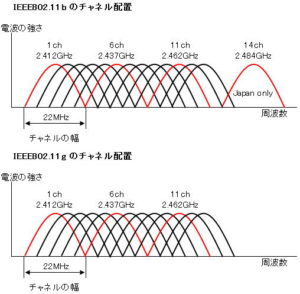Wireless LAN (what is a channel)
Wireless LAN (what is a channel)
Wireless LAN divides the frequency band used so that multiple devices can communicate at the same time. These divided frequency bands are called channels.
Wireless LAN devices must use the same channel to send and receive data.
A word of caution here.
When installing multiple access points that use the same channel, if there are other wireless devices within the range of the radio waves, the radio waves will interfere and the communication speed will decrease.
To prevent radio interference, nearby access points should be assigned different channels.
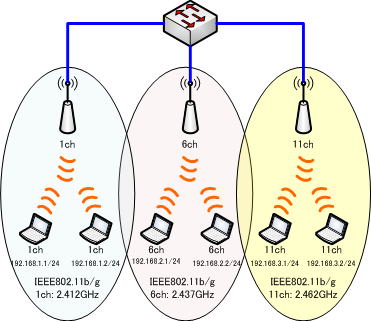
For example, let’s say you assign 1 channel to an access point. Even adjacent locations (next building, next house, etc.) are using access points and using the same one channel will cause radio wave interference.
To prevent radio interference, you should assign channels that do not interfere with those assigned to access points located in adjacent locations.
Recent wireless broadband routers automatically set the optimal channel so that you don’t have to manually set the channel number or find out which channel is being used around you. Some products are equipped with an “auto-configure channel” function.
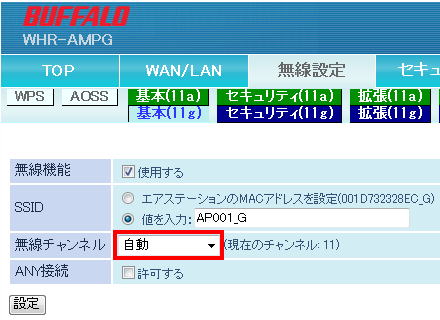
Wireless LAN (channel allocation)
Here, we will explain how to allocate the channels to be set to the access points when installing multiple access points.
◆ When assigning the same channel
When installing multiple access points that use the same channel, if there are other wireless devices within the range of the radio waves, the radio waves will interfere and the communication speed will decrease. This is because the frequencies overlap and cause interference.
Therefore, interference can be avoided by installing access points so that the channels do not overlap.
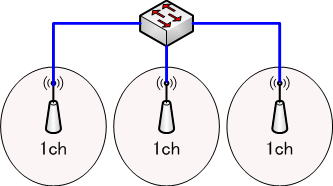
It is important to space the access points far enough apart so that there is no overlap.
If the spacing is not sufficient, radio interference will occur in areas where the radio waves overlap.
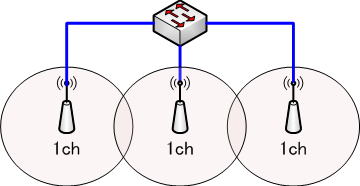
◆ When assigning different channels
Assign a different channel than nearby access points to prevent radio wave interference. By doing so, you can prevent radio wave interference from occurring between access points.
Select the channels to be used with enough space between them so that the frequency bands do not overlap.

Even if different channels are used as shown in the figure below, radio wave interference will occur if the frequency bands overlap. Using different channels does not eliminate radio interference. Radio interference is avoided by selecting the correct channel so that the frequency bands do not overlap.
See the diagram below. At first glance, it may seem that there is no problem, but 1ch, 2ch, and 3ch use the same frequency band in part. Therefore, radio interference occurs.
For IEEE802.11b,g, it is necessary to select channels with sufficient channel spacing. A space of at least 5 channels is required to avoid radio interference.
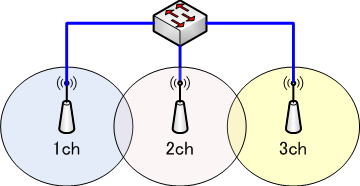
*In the case of IEEE802.11a, the frequency band assigned to each channel does not overlap with other channels, so there is no problem in assigning channels as shown above.


